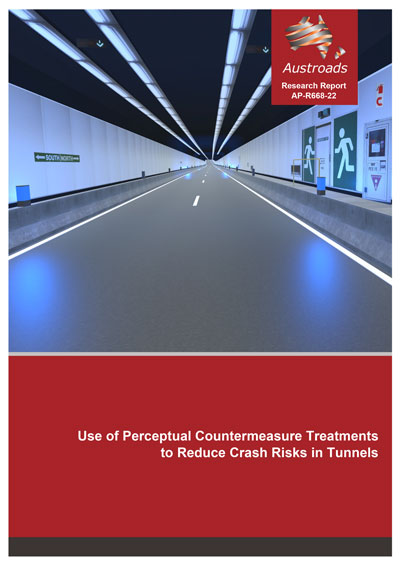Tuesday, 8 March 2022

An Austroads funded study conducted in a virtual reality driving simulator has evaluated a selection of treatments used to reduce crash risk in tunnels by improving driver speed behaviour, alertness and lane discipline.
The number of road tunnels is expected to increase in the coming years and while tunnels are relatively safe, they are the site of a significant number of crashes.
While there has been substantial research into the efficacy of perceptual countermeasure (PCM) treatments in reducing speed and improving lane keeping behaviours on roadways, there has been limited research and evaluation of this treatment type to enhance safety in tunnels specifically.
Austroads commissioned the University of NSW’s Research Centre for Integrated Transport Innovation to investigate and evaluate the application of low-cost PCM treatments in tunnels as a means of reducing crash risk.
The study considered the advantages and disadvantages of 33 PCM types identified as having a positive impact on driver behaviour in tunnels. Members of the Austroads Road Tunnels Task Force and Australasian Tunnel Operators Group, and various industry stakeholders rated each treatment’s effectiveness, ease of implementation, cost, maintenance, and applicability to a tunnel environment.
“Based on all the information from both the literature review and the stakeholder consultation, we chose to investigate the effects of a striped wall pattern, rumble strips and pacemaker lighting in a tunnel environment,” said Ross Guppy Austroads’ Transport Infrastructure Program Manager.
Each treatment was evaluated by 102 participants in an immersive virtual reality experience that simulated the Sydney Harbour Tunnel. The simulation was modelled with a high degree of precision, particularly at the entrance portals, interior tunnel, and exit portals. Vertical and horizontal alignments had been replicated based on technical drawings, specifications and real photographs provided by the Sydney Harbour Tunnel operator.
“At the conclusion of the tunnel drive, participants completed a questionnaire to share their perception and interpretation of the PCMs and whether they felt the treatments changed their behaviour,” said Ross.
In the simulated tunnel environment, the evaluated PCM treatments had little or no positive effect in either maintaining drivers’ speed or lane position. Nevertheless, in feedback from study, participants indicated that none of the PCMs compromised their safety, and that the tunnels treated with PCMs were perceived to be significantly more appealing than untreated tunnels.
Participants described the striped wall patterns as less sleep-inducing while the pacemaker lighting treatment was perceived as more memorable.
Join a webinar with authors Professor Michael Regan, Julius Secadiningrat, Dr. Prasannah Prabhakharan and Mitchell Cunningham on Tuesday 29 March 2022 for a detailed overview.
No charge but registration is essential.
Can’t make the live session? Register and we’ll send you a link to the recording.
